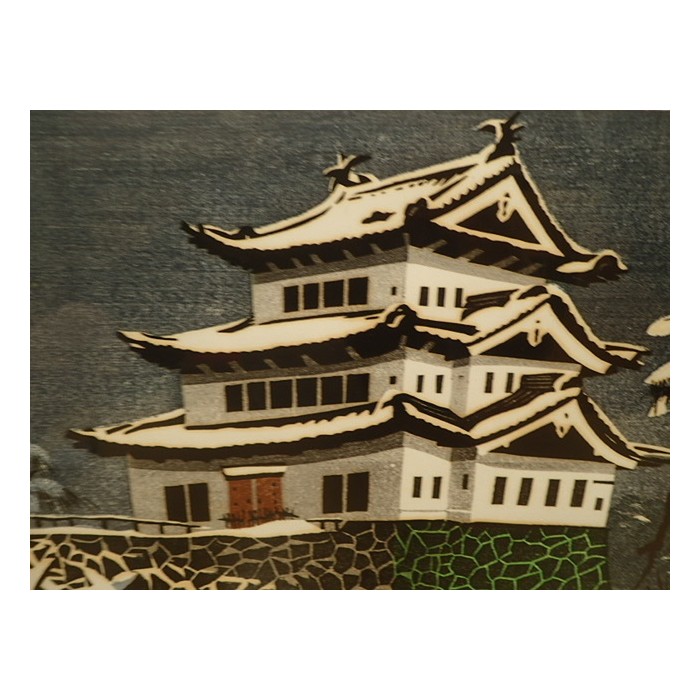


Takagi Shirō 高木志朗 (1934-1998)
The artist, born in Hirosaki in Aomori Prefecture, attended Musashino College of Fine Arts in Tokyo but left in 1958 because of “academic disciplines which bore no relation to the artist’s ideals… [and] the nonexistence of a print faculty.” (Petit) He studied moku hanga (woodblock prints) with Amano Kunihiro (b. 1929), but is largely self-taught. Takagi exhibited with the Nihon Hanga Kyōkai and the Kokugakai artist societies and was a member of the Nihon Hanga Kyōkai from 1961.
His work was in numerous international competitions and he won awards from the Japan Print Association in 1960 and the Sao Paulo Biennnale in 1967. His work has been divided by commentators into two phases - before 1971 his predominant pallet was reds and ochres used primarily in abstracted landscapes and post-1971 his work is more representational and green was added to his pallet. In commenting on the artist’s work the woodblock artist and critic Gaston Petit writes: “With the world of art spread before him, he sought a purely Japanese identification…. His patient self-training has guided him in measuring the full dimensions of a print and of all those qualities which coalesce to make it a work of art.”
One interesting or, perhaps, strange aspect of Takagi's work is his re-printing of a number of works created by the artist Shima Tamami (1937-1999), who also hailed from Hirosaki.1 It is unknown how Takagi acquired these blocks.
Collections (Partial List) British Museum; Los Angeles County Museum of Art; Carnegie Museum of Art